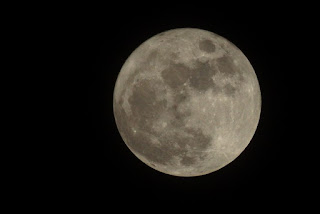There is evidence that lava flowed on the surface of the Moon about 1.97 billion years ago. This evidence is contained in lunar rocks that China successfully brought to Earth on the Chang'e-5 mission.
Quoted from The Conversation, Tuesday (12/10/2021) a research team from China, Australia, Sweden and the US is currently studying the samples collected by the China National Space Agency.
Chang'e-5 was an unmanned mission that landed on the closest side of the Moon (the side facing Earth) in December 2020. The mission brought 1.7 kilograms of lunar rock to Earth. This is the first sample collected from the Moon since 1976 using the Soviet Union's Luna 24 mission.
The goal of the Chang'e-5 mission is to find evidence of some of the youngest volcanic eruptions on the Moon. Although scientists had previously been able to predict volcanic rocks of this age on the Moon, by studying the number of impact craters on the lunar surface, it was still impossible to confirm this. without checking the sample.
Sample analysis was performed using a sensitive high-resolution ion microprobe (SHRIMP), at the SHRIMP Center in Beijing, China.
First, the material is sorted. The researchers manually selected several small fragments of basalt (volcanic rock), roughly 2 millimeters in size to investigate. Subsequently, laboratory analysis was carried out, building on techniques such as those developed in the 1970s for the analysis of the first Apollo samples.
The process of determining the age of rocks is complicated. But in essence, the researchers used a focused beam of charged particles to remove material from the various mineral phases in the rock and analyze the ejected material.
These efforts paid off when they were able to determine the eruption age for this lava to be 1.97 billion years. This figure is one billion years younger than previous basaltic lava from the Moon.

